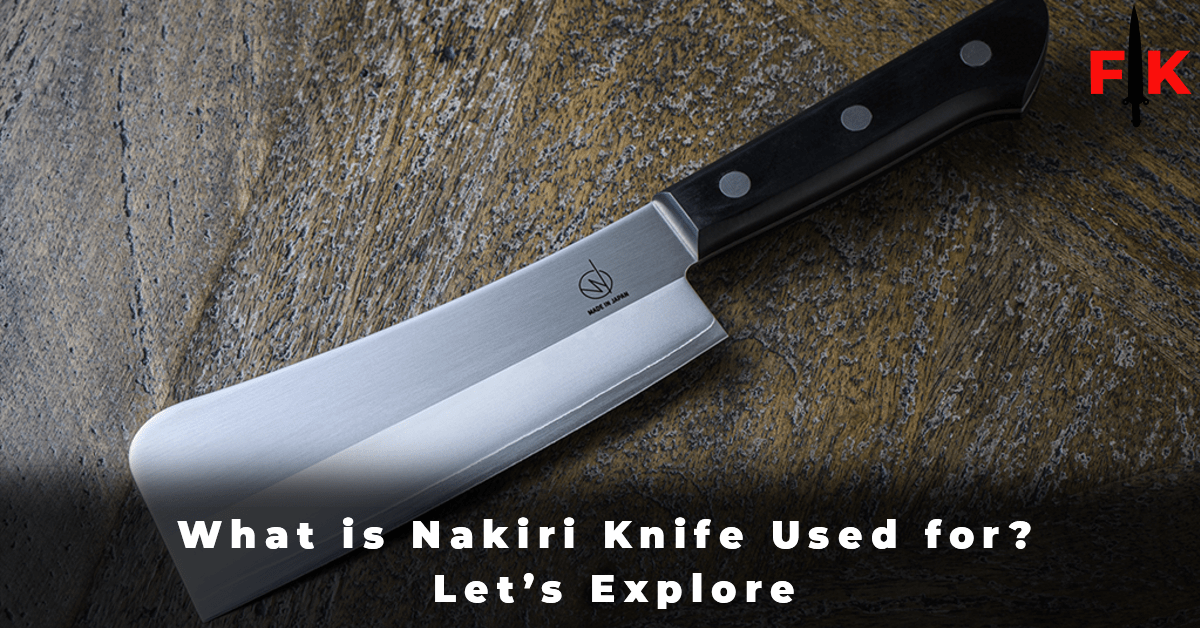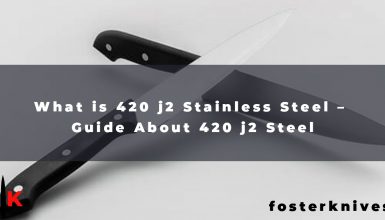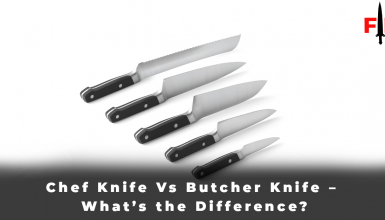Nakiri Knife is the most favorite choice for Japanese chefs. This knife fascinates many of the top chefs not only in Japan but worldwide. I can recall that time when I have first seen this exceptional knife some 5 years ago. Actually, I was searching for the blade to supplement my 240mm gyuto, and I was captivated by the square shape that I thought might be some sort of meat-cutting knife.
So I thought to give this amazing Nakiri knife a try, and I was stunned by how light it was contrasted with my assumptions. This sharp blade was nearly paper slender and extremely simple to employ! But to my surprise, the Nakiri is not a meat blade. This square-level-edged edge is planned in view of cutting vegetables, and it performs excellently. I initially came to the Nakiri for its boss looks, however, I remained for its stunning execution.
Table of Contents
Nakiri Knife – Overview
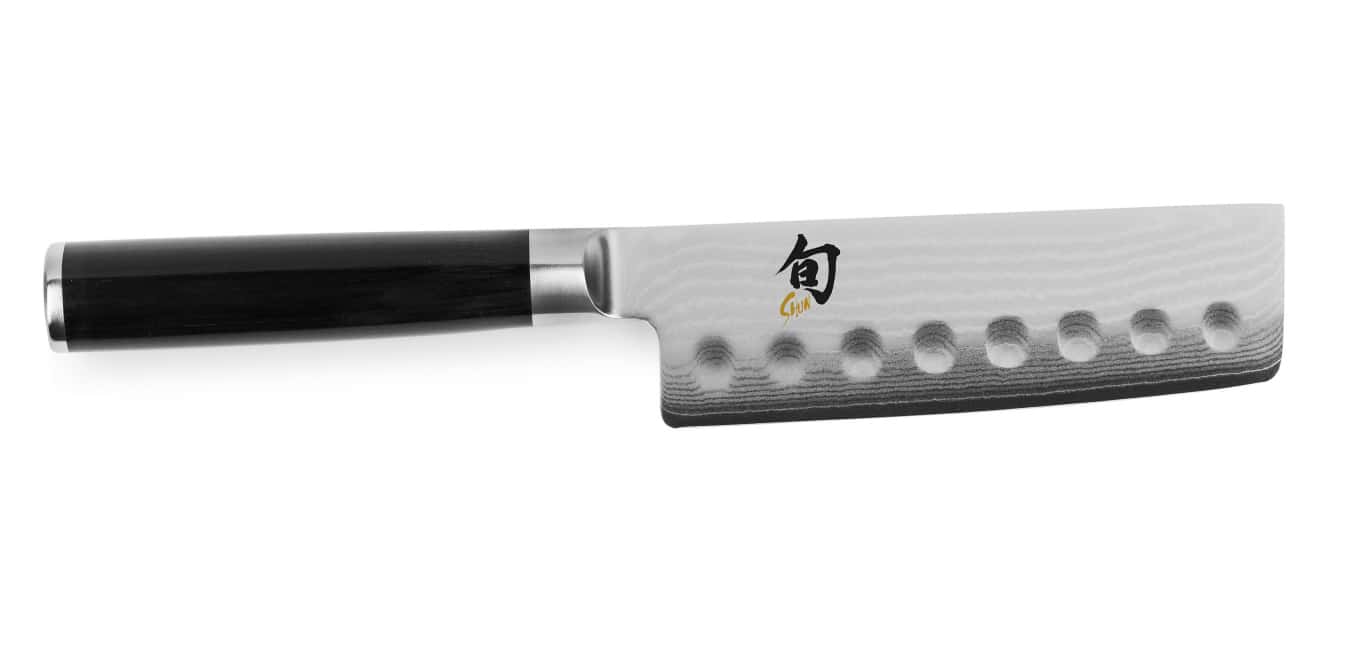
All the chefs know the struggle to cut peppers for a sautéed food and been left with a line of still-connected vegetables looking like paper dolls? That is on the grounds that It’s in reality extremely simple to not carve the entire way through the skin of a vegetable with a bent edge. With its level edge, the Nakiri connects with your cutting board. More contact implies cleaner cuts!
Utilizing a Nakiri can take a touch of change. At the point when you initially get to cleaving, you’ll most likely notice that sliding the blade forward or back works obviously well as compared to shaking it. All blades work better by slicing, however, we’re prepared to shake our blades in the west. The Nakiri knife is going to change your world, and with a little practice, your blade skills will be better than anyone might have expected!
Nakiri’s additionally have somewhat more haul and forward balance than a comparative size santoku or gyuto in light of the fact that there’s more steel toward the front of the blade. Assuming that you’re lethargic like me, it implies you’ll be enchanted by the amount of work they accomplish for you. The more you handle a Nakiri, the more you begin to understand that they’re something other than a lovely face – they’re vegetable slashing machines!
So, taking the advantage of a Nakiri blade is to some degree not the same as an exemplary western gourmet specialist’s blade.
First and foremost, the sharp edge remains somewhat straight and level right along the edge, not at all like the regularly more bent edges found in the western blade plan. That implies that a Nakiri blade is intended for an all-over movement, rather than the stone cleaving movement of numerous western blades.
How to use a Nakiri knife?
- To utilize a Nakiri knife you should hold the handle firmly in one hand. You can gag the sharp edge (grasping the cutting edge with your thumb and finger) to assist with expanding your command over the blade assuming you wish.
- With your other hand hold the food, bowing your hand into a hook-like shape so it is your knuckles, not your fingertips, that project out the farthest towards the blade sharp edge, that will assist with keeping you from cutting your finger coincidentally.
Most im[portantly, with the passage of time you learn the real technique to use this vegetable cutting knife.
Why should I have Nakiri Knife?
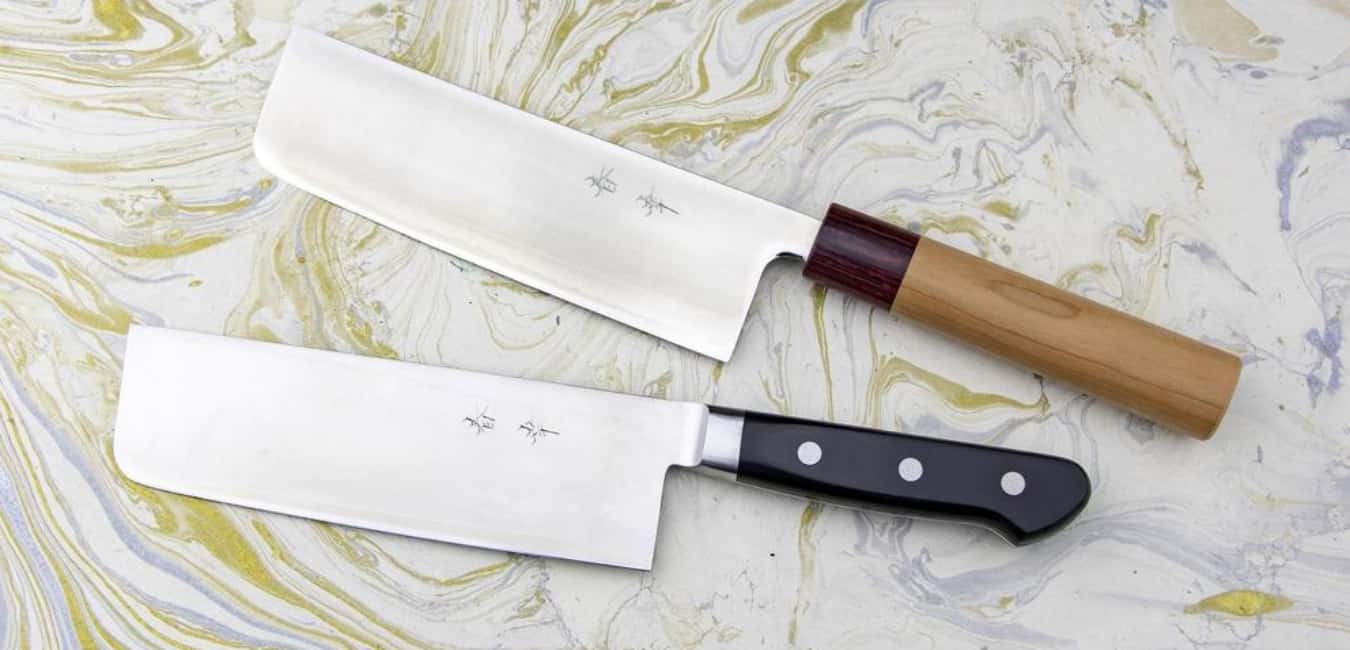
In my kitchen, the Nakiri replaces “Top assistant Chef” with my enormous 240mm gyuto. The gyuto consistently drives the charge, yet my Nakiri does a ton of the uncompromising prep work. Need to cut up 10 onions for soup? No biggie. Need to cut scalloped potatoes for a major family supper? Move over mandolin, it’s Nakiri time. Need to prepare a little pan-fried food for two? The Nakiri will have it done in minutes.
Your Nakiri can likewise be just as helpful as your gourmet specialist’s blade. They can handle little positions like mincing garlic and slashing spices, yet they can likewise slow down into a major verdant heap of kale or a 5lb cabbage. Assuming that you’re vegetarian and just cut veggies, this is the blade you really want. They’re an extraordinary first blade, and the ideal special case to balance a bigger assortment.
Is a Nakiri blade worth the effort?
This truly relies upon you. Assuming you’re a home cook who likes to have the right device for the right work then yes Nakiri blades without any reluctance.
At last, cutting vegetables is one of the most widely recognized food planning toils a cook has to face, regardless of whether they’re a home cook or an expert culinary specialist.
So assuming you’re quick to involve some Japanese-style blades in the kitchen then a Nakiri is an incredible decision. Despite the fact that it’s an expert blade you’ll wind up utilizing it consistently since we as a whole ought to eat vegetables consistently.
In my view, that makes a Nakiri a really simple-to-buy product. Individuals fill their kitchens with gadgets, however rarely utilized items. Slow cookers, fileting blades, that barbecued cheddar creator, and seven distinctive container openers.
In any case, not many individuals appear to put resources into explicitly planned apparatuses that are really valuable for ordinary errands, and that is by and large what a Nakiri blade is.
Assuming you really do decide to get one, I’d nearly ensure it’ll be one of your best two most involved blades in the kitchen and will keep on being for quite a long time.
How to Choose the Best Nakiri Knife – Buyer’s Guide
Beneath, I’ll talk about the particular regions I centered around when searching for the best Nakiri blade for my own kitchen. When you get to know the life systems of a blade, you’ll have the option to settle on informed choices concerning which brand is appropriate for you. Put my experience and your inclinations together, and you’ll have my technique for finding the best Nakiri to add to your kitchen.
- Materials
- Handle
- Sharp Edge
- Forefront
- Care
- Cost
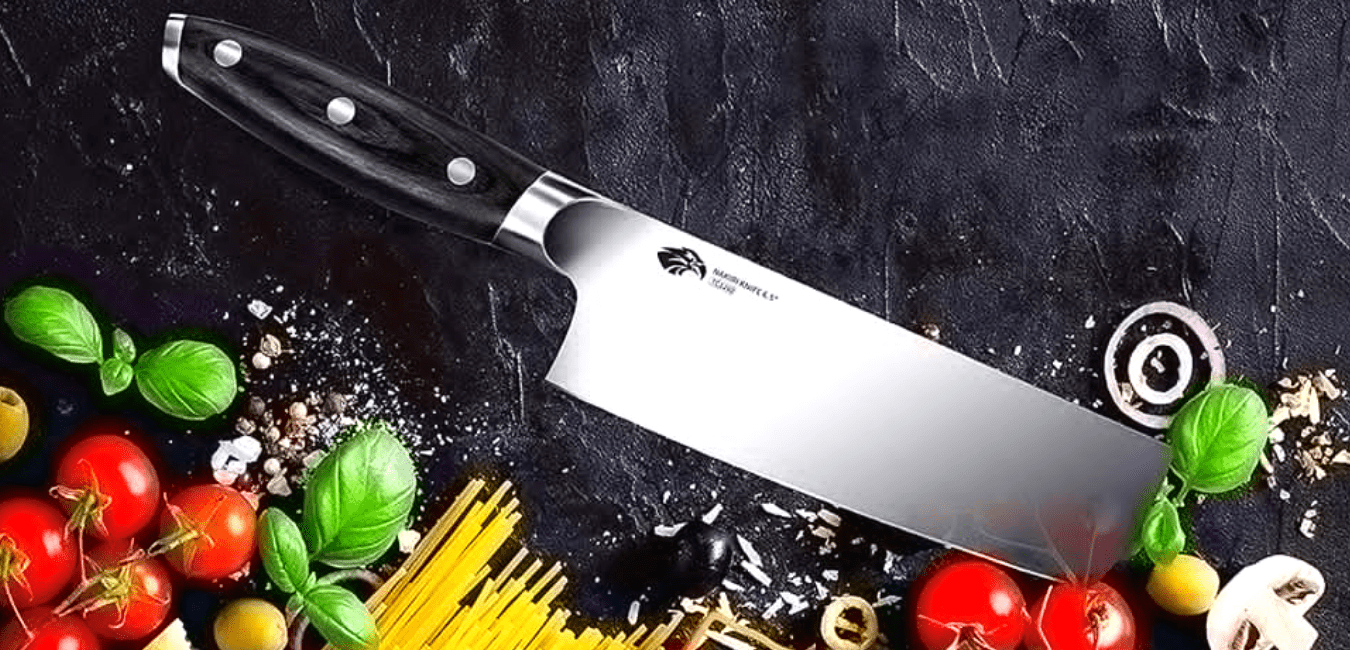
1. Materials
Any blade may be pretty much as great as the materials it’s made of. On account of Nakiri blades, you should search for three principle signs of value:
- A high carbon steel cutting edge.
- A characteristic wood or hard engineered handle.
- End-to-end length development, for example, the steel stretches out from the tip of the sharp edge through the butt of the handle.
Taken together, these three signs show that a Nakiri blade will be sharp, sturdy, and agreeable to utilize. In the following two areas, I’ll investigate these ideas more meticulously.
2. Handle
The handle for a Nakiri has two significant capacities: Giving you an agreeable hold, and adjusting the heaviness of the sharp edge.
An agreeable hold comes from a mix of the handle’s shape and the material it is made of. Marginally bent handles offer an agreeable ergonomic grasp. Customary straight handles demand the greatest control. Search for a handle that gives your knuckles sufficient leeway to not beat against your cutting board while you work.
Both normal wood and hard engineered handles bear the cost of an extraordinary equilibrium for a Nakiri blade. Normal wood enjoys the benefit in the looks office, however, engineered handles are more sterile and slip-safe.
The last part of Nakiri’s handle is the support, the associating point between the handle and the sharp edge. Most Nakiri blades include practically non-existent support, with barely enough material to make the blade solid. My top pick, however, highlights a full reinforcement — giving more noteworthy assurance for your lead finger while cutting. Either choice is great, as long as the equilibrium is there.
3. Sharp Edge
Each kind of blade is characterized by the particular attributes of its sharp edge. Taken all in all, the accompanying five edge attributes make for a top-quality Nakiri knife:
- The tallness of a Nakiri blade ought to be coordinated with the state of the handle to give your knuckles a lot of room. That implies most Nakiri cutting edges will gauge somewhere in the range of 1 and 1.5 inches.
- Weight is a region where Nakiri is exceptional from other culinary experts’ blades. They’re intended to be just about as lightweight as could be expected, to take into consideration exact cuts and deft moving.
- Sharp edge length is the place where you’ll track down the best contrast from one brand to another. The most limited Nakiri blades will quantify around 5.5 inches, while 7.5 inches is the top finish of length. As far as I can tell, 6.5 to 7 inches is the genuine perfect balance for a Nakiri’s edge.
- The thickness of a Nakiri blade’s sharp edge falls straightforwardly in accordance with its weight. Not at all like culinary specialist’s blades or knives that have thicker spines, Nakiri’s sharp edges are consistently slender from the spine to the edge. This gives them a more noteworthy capacity to make paper-flimsy cuts on vegetables.
- Balance is the fifth and last component, and a mix of all that precedes it. When a Nakiri has incredible equilibrium, it will feel practically weightless while you’re cutting. This comes because of the materials utilized for the sharp edge, support, and handle, just as the producing system.
4. Forefront
Conventional Japanese cutting edges, with their harder steel, can be honed to more extreme points. This outcome in more slender, more exact cuts. The tradeoff is that Japanese cutting edges are more inclined to chipping, and require more regular honing to keep up with the ideal point.
Western edges, with their milder steel, should be honed to somewhat more extensive points. They will be unable to make the paper-slim cuts of Japanese steel, yet they’re a lot more solid. That implies more prominent edge maintenance, as well, and less successive honing, therefore.
5. Care
Likewise with each blade in your kitchen, appropriately focusing on your Nakiri will broaden its life span and increment its presentation. The following are three things to remember for getting the best out of your blades:
Continuously keep your blades dry. Towel them off later each utilization, and store them in a cool dry spot. This will forestall erosion and staining.
Think about figuring out how to hone your blades. A basic and reasonable two-sided whetstone just takes a tad of training to utilize. Furthermore, the outcomes will guarantee that you’re continually making the cleanest cuts conceivable. The people from Korin have a phenomenal series of recordings where you can figure out how to hone your own blades.
Have a protected spot to store your blades. Assuming that is a cabinet in your kitchen, devote it just to cut stockpiling. The last thing you need is your new blade getting chipped and beaten up. Then again, a blade block or attractive blade rack can be a genuine space saver.
6. Cost
What amount would it be advisable for you to spend on a Nakiri blade? That relies upon the amount you anticipate utilizing it. In the event that you’re an expert gourmet specialist, planning more for a blade you utilize each day will pay off in improved execution. This normally means a more extended and taller cutting edge made with more grounded steel. A good Nakiri knife costs approximately $100.
What is Nakiri Knife Used for – FAQ’s
Wrapping up
To wrap up the Nakiri has various benefits that make it incredible for cutting vegetables. A portion of these is referenced beneath.
- It has a level edge so it can make truly dainty and even cuts. This makes it extraordinary for making vegetable strips.
- Nakiri blades are by and large long, which makes them ideal for most vegetables.
- The level edge permits you to slice directly through the veggie to the cutting board, giving truly clean cuts. You don’t get bits of veggies with little strings clinging to them.
- Nakiri blades can deal with fragile veggies well without crushing them.
- The straight edge of the Nakiri permits you to hack vegetables without expecting to ‘shake’ the cutting edge.
- The wide sharp edge of the Nakiri shields your knuckles from hitting the cutting board when cutting.
- The Nakiri’s rectangular cutting edge guarantees that it doesn’t abbreviate long because of consistent honing, not at all like different blades that have the three-sided edge.

